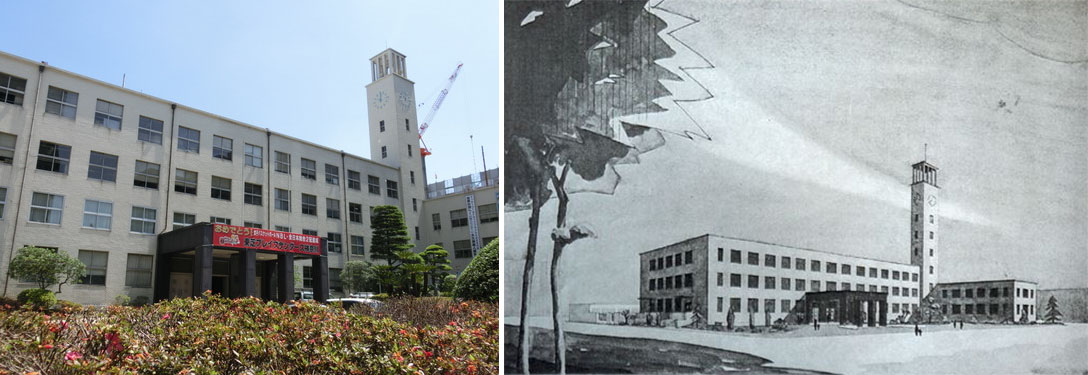Kawasaki City to demolish 78-year old city hall building

Kawasaki City will begin demolition of its 78-year old city hall building next month. The historic building will be replaced with a 40 billion Yen high-rise government office building due for completion in 2022.Read more
Faulty apartment building in Yokohama to be demolished next year
 Last month, two years after the building was found to be tilting, the owners association of a condominium complex in Yokohama voted in favour of redevelopment.
Last month, two years after the building was found to be tilting, the owners association of a condominium complex in Yokohama voted in favour of redevelopment.
In October 2015 it was announced that several of the foundation piles in one of the buildings were not sunk deep enough to reach bedrock and a 2 cm difference in height had developed between the buildings. Residents were assured by the developer that the building posed no immediate risk and still met earthquake-resistant standards. However, further inspections found that the building would not withstand an earthquake producing a seismic intensity of 5+ or higher. In August 2016, Yokohama City issued the developer with a correction order under the Building Standards Act.
The 12-storey condominium was built in 2007 and contains over 700 apartments.
Demolition of all four blocks in the complex, including the one that has already started to show signs of tilting, will start as early as April 2017. It will be replaced by new buildings which should be ready for residents to move into from late 2020. The developer will bear the 40 billion Yen (390 million USD) cost of redevelopment.
Under the Condominium Unit Ownership Act, 80% of owners must vote in favour in order to redevelop a condominium. In this particular case, 99% of owners were in favour of rebuilding. Those that were not in favour will be forced to sell their apartments to the owners association, as outlined under the Act.
It is likely that the redevelopment committee will select a different developer to carry out the reconstruction, rather than the original developer. Apartment owners who plan to move into the new building will be provided with temporary housing in the meantime. In addition to shouldering the cost of redevelopment and temporary accommodation, Mitsui is providing each household with 3 million Yen in compensation.
Sources:
The Nikkei Shimbun, September 19, 2016.
The Tokyo Shimbun, September 20, 2016.
Setagaya to demolish Kunio Maekawa-designed office buildings

On June 25, Setagaya Ward announced that they are considering demolishing and rebuilding the ward office buildings. The buildings may be replaced by 5 ~ 8-storey government office buildings, with construction starting by 2020.
The No. 1, No. 2 and Kumin Hall Buildings were designed by modernist architect Kunio Maekawa and built in 1959-1960. Read more
Sony to demolish iconic Ginza building in 2017

The 50-year old Sony Building in Tokyo’s Ginza area will be demolished in 2017 to make way for a temporary park, and finally a replacement building by 2022.
The building sits on a prime 700 sqm (7,500 sq.ft) corner block of land just 180 meters from the historic Wako Building and the Mitsukoshi Department Store. The land is used as one of the government’s chika-koji annual land survey sites. In 2016, the land had a surveyed value of 34,700,000 Yen/sqm (approx. 31,000 USD/sq.ft), which would make the 700 sqm site valued at approximately 24.5 billion Yen (approx. 235 million USD). The valuation was up 18.03% from 2015, and has increased by a staggering 151% since 2002. Read more
Demolition of philosopher’s home in Kyoto starts this week

Demolition of the former home of philosopher Kitaro Nishida (1870-1945) started earlier this week. Nishida, founder of the Kyoto School of philosophy, rented the traditional Japanese house from 1912 ~ 1922. It is 500 meters north-west of Kyoto University, where he was a professor.
The 2-storey, wooden house was built in the later part of the Meiji era (1868-1912) as a rental property, with the landlord living nearby. The deteriorated condition of the 100+ year-old house was cited as the reason for demolition. It is expected that it will be replaced with apartments.
Historic Kudan Kaikan to be replaced with high-rise building

There are plans to convert the historic Kudan Kaikan building near the Imperial Palace in Tokyo into a 75-meter tall office building. Tenders will soon be open to developers, with the requirements that proposals include retaining parts of the historic facade or at least attempting to recreate the facade, and for a new building with a height of no more than 75 meters.Read more
Apartments planned for former Dojunkai housing block in Shinagawa
 A densely packed neighbourhood built after the 1923 Great Kanto earthquake is about to be demolished and replaced with a 40 meter tall, 13-storey apartment building. Construction is scheduled to start in 2017 with completion by early 2019.
A densely packed neighbourhood built after the 1923 Great Kanto earthquake is about to be demolished and replaced with a 40 meter tall, 13-storey apartment building. Construction is scheduled to start in 2017 with completion by early 2019.
The former Dojunkai Ebara Jutaku was a housing subdivision that was developed as part of Tokyo’s recovery following the devastating 1923 earthquake. It contained a number of wood-framed 2-storey homes fronting onto narrow pathways. The neighbourhood was originally laid out in a circular pattern, similar to the area in front of Denenchofu Station, with 356 houses, a playground, clinic and shops. Most of the area was destroyed during WWII air raids and re-arranged post-war, with only the current small block surviving to this day.Read more
